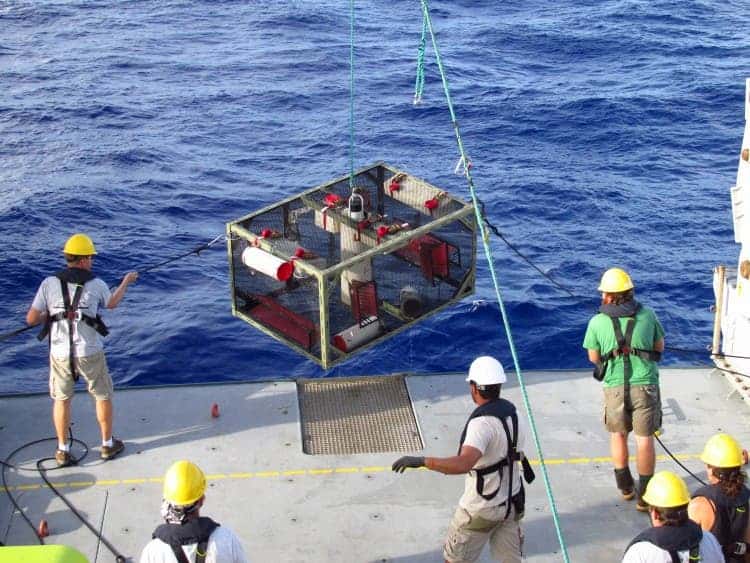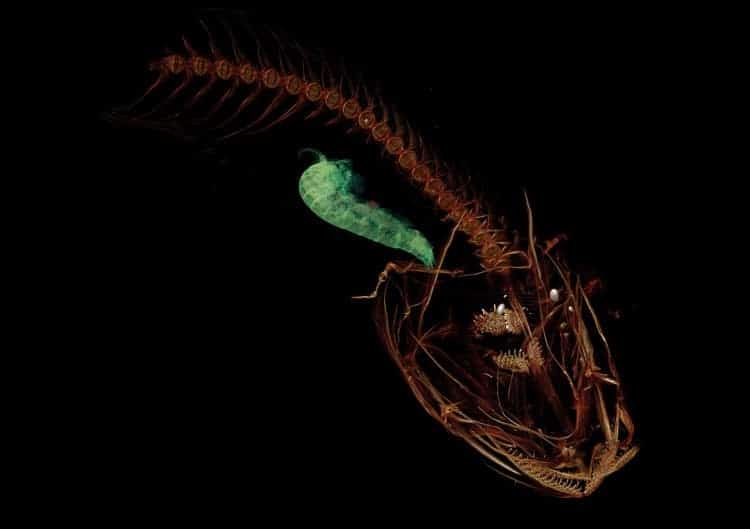Miles below the surface of the Mariana Trench, marine life looks totally different from what most people are used to. Instead of big or menacing, the creatures that roam the deepest parts of the ocean are quite small, translucent, and scaleless. At such depths, few organisms are able to survive, so much so that not even some of our submersibles can withstand the ungodly pressure. Yet life always finds a way. The Mariana snailfish (Pseudoliparis swirei) is a newly described species that now holds the crown for the deepest fish in the sea, thriving at depths of up to about 8,000 meters (26,200 feet).
“This is the deepest fish that’s been collected from the ocean floor, and we’re very excited to have an official name,” said lead author Mackenzie Gerringer, a postdoctoral researcher at the University of Washington’s Friday Harbor Laboratories. “They don’t look very robust or strong for living in such an extreme environment, but they are extremely successful.”
The ghost of the depths

Researchers recover a trap after it landed on the bottom of the Mariana Trench. Credit: Paul Yancey.
There are more than 400 species of snailfish which can be found at all sorts of depths, from shallow waters to the darkest recesses of the bottom of the ocean, and range from 2 to 30 inches in length. In deep waters, such fish congregate in large groups and feed on tiny crustaceans and shrimp. Not much is known about how these fish manage to survive the extreme pressure experienced at such depths, which is similar to an elephant standing on your thumb.
Pseudoliparis swirei dominates the deepest parts of the Mariana Trench, located in the western Pacific Ocean. Gerringer and colleagues surprised many specimens in the waters below a stretch of the Mariana Trench near Guam, which they recorded with remote controlled specialized submersibles. Between 2014 and 2017, the team collected 37 individuals from depths of about 6,900 meters (22,600 feet) to 8,000 meters (26,200 feet). Following skeletal and DNA analysis, the researchers determined they were dealing with a new species, which they named in honor of Herbert Swire, an officer on the HMS Challenger expedition in the late 1800s that first discovered the Mariana Trench. The new species was described in a paper published in the journal Zootaxa.

A CT scan of the Mariana snailfish. A small crustacean colored in green is seen in the snailfish’s stomach. Credit: Adam Summers/University of Washington.
Most recently, a Japanese expedition recorded a Mariana snailfish at depths of 8,178 meters (26,830 feet), the deepest sighting yet and quite possibly the deepest depth a living creature can withstand, biologically-speaking.
To withstand the immense pressures found at the bottom of the ocean, fish produce a substance called osmolyte, which helps cells maintain volume and fluid balance. The fish’s body can’t produce any of this substance below 26,900 feet (8,200 meters), which is why scientists say that — theoretically at least — you won’t find fish anymore below this threshold. The ghostly-looking snailfish likes to live dangerously, swimming barely above this dangerous edge.
“Snailfishes have adapted to go deeper than other fish and can live in the deep trenches. Here they are free of predators, and the funnel shape of the trench means there’s much more food,” said co-author Thomas Linley of Newcastle University, in a statement. “There are lots of invertebrate prey and the snailfish are the top predator. They are active and look very well-fed.










